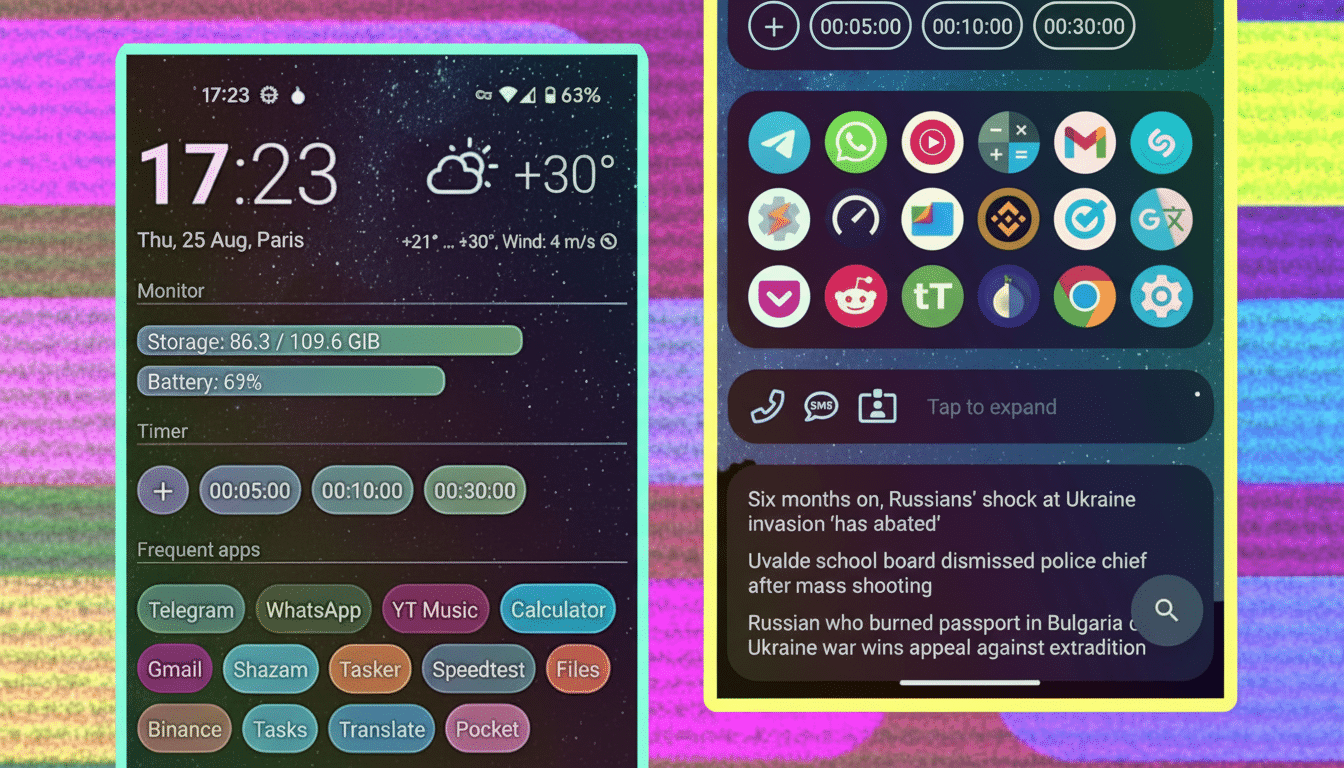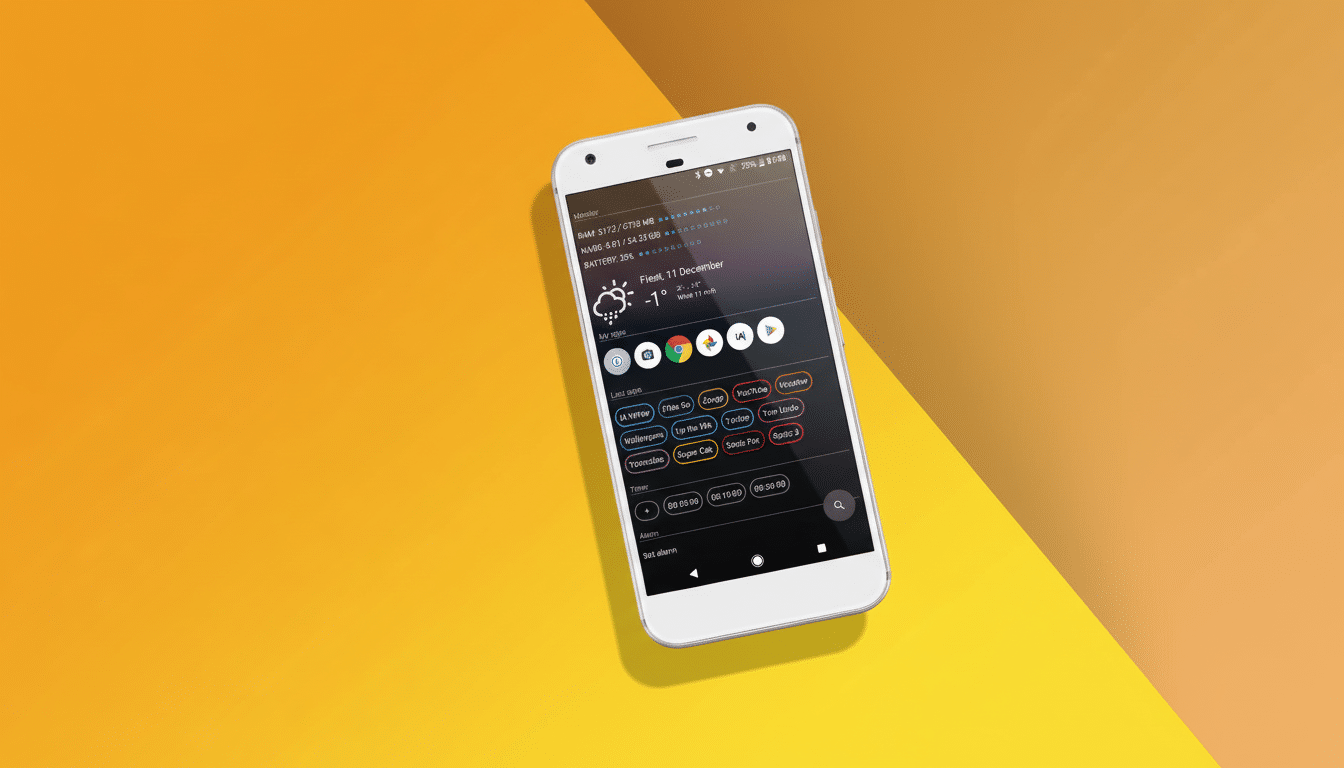I’ve tested nearly every popular Android launcher since I got my first phone, including minimalist darlings and deep customization toolkits, but AIO Launcher is the first to embrace widgets so thoroughly that my home screen feels like a tableau of a living dashboard today. It’s brash, dense, and wildly configurable — and once you get it, it’s hard to go back.
The Reason This Widget-First Home Screen Works
AIO Launcher flips the app-based paradigm that you’re used to. You get a vertically scrolling stack of information-dense modules rather than rows of icons that help bring glanceable data and quick actions to the fore. It’s the closest you can get to an always-on control center on Android.

The method aligns with a rule of thumb about usability that I’ve often heard applied by user-experience researchers at the Nielsen Norman Group: progressive disclosure. AIO starts off with only the necessary snapshot and adds “on tap” available detail. That sort of design keeps cognitive load as low as possible, while still giving you that depth when you need it.
How AIO Launcher Reimagines Widgets on Android
Out of the gate, it includes approximately 40 built-in widgets, which can be expanded into more via the AIO Store and community scripts, pushing the grand total north of 50 before third-party app support is even factored in.
It’s a customizer’s paradise, but still never feels like chaos.
My layout combines a clock with weather, calendar panes, notification previews, a system monitor, and a compact tray of frequent apps within thumb’s reach. Under the fold, I place less time-sensitive modules: a currency converter, to-do items, a timer setting, financial charts, and a news feed. The majority of widgets are resizable, and more than a few are also tappable (touch the forecast to display other days, tap on a date for your full agenda, or browse recent files by tapping on a storage line).
If you are still an app hunter, do a bodacious edge swipe and see your apps sorted alphabetically into an expandable list as well as smart categories that auto-bucket people’s apps (News/Feeds, Music/Audio, etc).
It’s speedier than it sounds, and the categorization is remarkably precise.
Search That Actually Helps You Every Day
AIO’s search is a sleeper feature. It can deal with device content and app actions, but it also makes sort of “bangs” to completely switch to another app. Type !gp + term and you’re searching the Play Store in a flash. Use @ or ! plus an app name to find existing operations.

The results page is more than just a list of links. You’ll see chips for web search, world clock info for cities, results pulled from your news widget, contacts themselves, and now notification content (if granted), even deep actions inside apps. Press and hold the search icon for a shortcut shelf — a helpful little trick that I stumbled upon by accident and now can’t get out of my muscle memory.
Themes, Profiles, and Power Tools for Power Users
Its productivity-oriented nature aside, AIO also has an intense visual regimen. Free users have access to 11 themes, with three more and additional tuning for premium. Material You is great and respectful of dark mode, while a Paper theme turns your screen into tasteful e-paper.
Profiles are a quiet superpower. You get to save full widget layouts and states, and can switch between them — perfect for separating work from weekend. Gesture support is solid too: you get some gestures in the free version, and another seven if you pay for it, including hardware button actions (for heavy-handed gesture users transitioning from launchers with more controls).
Under the hood, AIO plugs in Lua scripting, Tasker integration, and optional ChatGPT-powered goodies for members (e.g., automatic app categorization, translation tagging, and notification filtering). Whether you actually need AI here might be questionable, but it’s there if you want it.
For context, the launcher has been installed over a million times on Google Play and has maintained a mid–4-star rating per its store listing — impressive for a niche, information-dense design that goes against today’s prevailing simplistic grain.
Where It Still Needs Work to Improve Usability
The widget picker is where the rub happens. While the native Android widget picker has a downward-sectioned list so you can see at a glance what’s available, AIO then asks you to either type globally or long-press icons to find a widget. Not all widgets are supported. It would be an easy win with a combined picker in the edit view.
The weather widget sources data only from the Norwegian Meteorological Institute. It’s true, though there isn’t any alternative provider on offer, and I miss seeing wind direction as well as speed. The settings menu can also sometimes feel like you’re sitting in the cockpit of an airplane; adding a search option to look for internal settings would be a useful feature, especially for new users.
Bottom Line: Why AIO Launcher Stands Out Today
AIO Launcher is one of the few launchers that truly serves as an all-in-one launcher. By making widgets the rightful interface and nailing information hierarchy, it turns your home screen into an impressively functional control panel that never forgets to be beautiful. It has quirks, but one in particular doesn’t detract from the day-to-day speed and focus benefits. After days with the app, I’m not just impressed — I’m switching, and the premium unlock is a no-brainer.

